Picture this: You just lost a customer, and you have no idea why.
They didn't open a support ticket. They didn’t leave a review. But they did hit a friction point you never saw coming, and without real-time feedback, it stayed invisible.
That’s the problem. The customer feedback that arrives too late is the feedback that costs you money.
Let’s fix that.
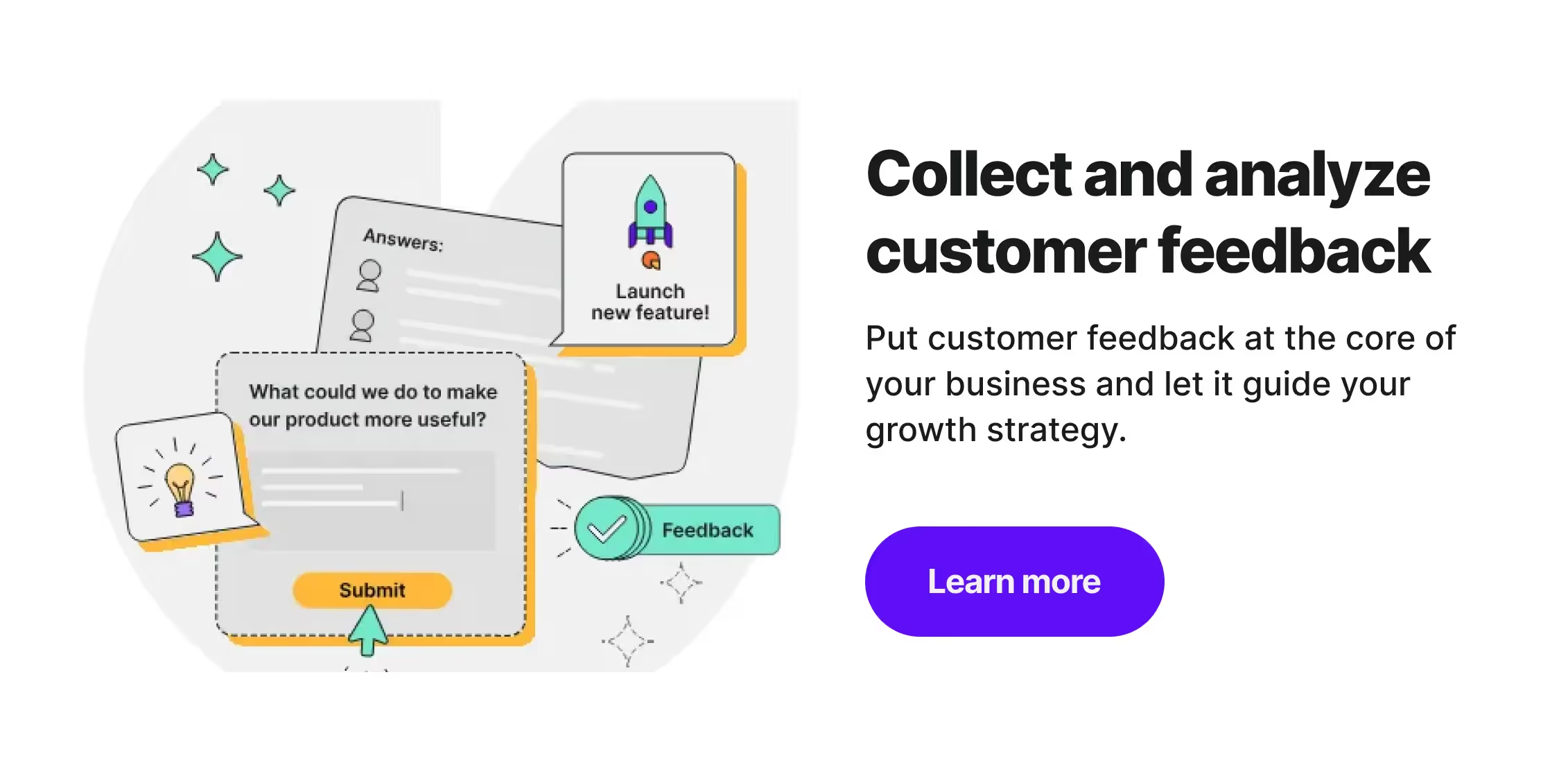
Tl; dr;
- Real-time feedback is essential for immediate customer engagement and swift resolution of issues, enhancing overall customer experience and satisfaction.
- Continuously collecting customer feedback allows businesses to make more informed decisions and quickly identify trends.
- Collecting and acting upon feedback demonstrate to customers that their opinions are valued, fostering loyalty and trust.
- Feedback management software facilitates the collection and analysis process, enabling quick action and enhancement of customer engagement.
- Integrating a real-time feedback tool requires identifying key interactions and continuously analyzing data for improvements.
What is real-time feedback (and why should you care)?
Real-time feedback is customer input captured as it happens. It’s the “ouch” right after a confusing checkout. The “wow” after a helpful chatbot. It’s fast, fresh, and insanely actionable.
Here’s why real-time customer feedback matters: it allows you to spot problems before they snowball, address issues while users still care, and build better products and stronger loyalty, faster. It’s the difference between reading a bad review and preventing it in the first place.

When to collect real-time feedback
Timing is everything. Collecting feedback right after a customer completes a key action like signing up, making a purchase, or canceling is where the real insights happen.
Another prime moment is when customers appear lost or frustrated, like abandoning a page or rage-clicking in confusion.
And don’t forget feature milestones: when users first interact with a new feature, or stop using it altogether. These moments are ripe for honest, context-rich customer feedback.
How to collect real-time feedback?
If you want to really understand online customer experiences as they happen, you should start gathering immediate responses. However, as you do this, you must remember not to go overboard with the number of touchpoints in which you ask for feedback.
There are various ways to collect real-time feedback that don’t interrupt the user experience. The most effective methods include:
- Microsurveys: Embed short, contextual surveys directly inside your product or website.
- Email surveys: Trigger personalized emails after a user takes a specific action.
- Live chat ratings: Ask customers to rate their support experience as soon as the conversation ends.
- Feedback widgets: Offer always-available forms on your website or in your product for users to leave input when they want to.
- Mobile app surveys: Send surveys within your app, often after key actions like purchases or updates.
- Exit-intent popups: Prompt feedback when a user is about to leave your site or abandon a cart.
The best approach is to match your method with the moment—meeting users where they are, with minimal friction.
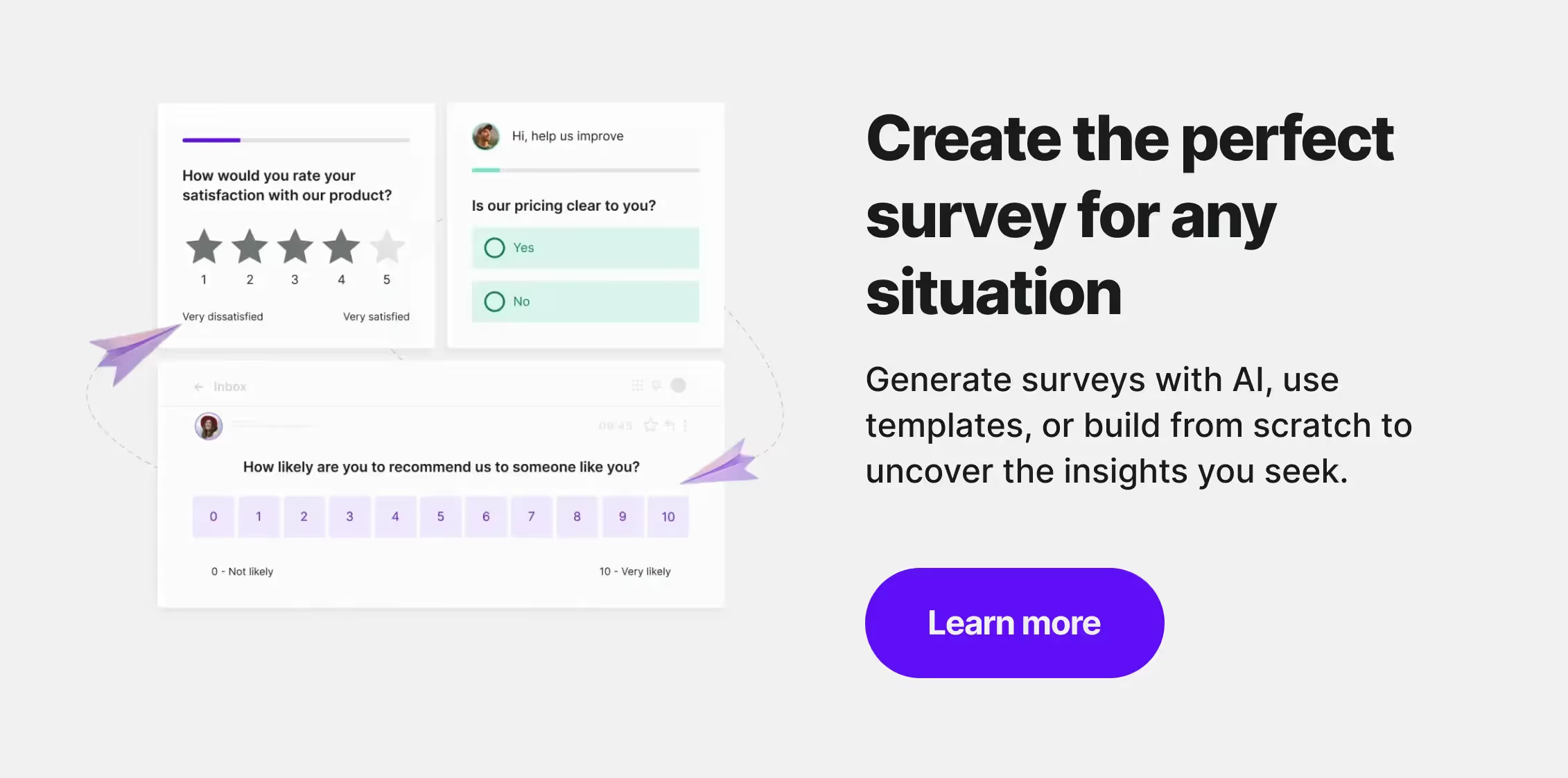
How to track customer feedback effectively
Let’s get practical. Tracking customer feedback well means setting up systems that run automatically so you can spend more time acting on insights than collecting them.
Use the right tools (and connect them)
Start by selecting the tools that capture customer feedback at scale. Surveys are the bread and butter here: in-app, email, and link-based options give you flexibility. Combine that with session replay tools like FullStory to see what users actually do, not just what they say.
Support tickets and chat logs are feedback in disguise, and app store or social reviews can surface sentiment you might otherwise miss.
💡 Tip: Survicate supports flexible survey distribution—via email, link, website, mobile app, or even Intercom Messenger. It integrates seamlessly with tools like HubSpot, Braze, Salesforce, and many more, ensuring customer feedback instantly reaches the teams that need it most.
Map feedback to the customer journey
Don’t just ask for customer feedback randomly. Tie your questions to strategic points along the customer journey. During onboarding, ask whether the experience is clear.
💡 Tip: Use customer effort score survey to evaluate how confident users feel about your product.
After key feature interactions, check if expectations were met. Post-support, gauge whether the issue was resolved. And, of course, ask why users are leaving when they churn. Context is king, and smart timing leads to more honest answers.
Categorize and tag customer feedback automatically
Once you've collected feedback, you’ll need to turn raw comments into insights. Use tagging to organize responses into themes like pricing, UX, or bugs.
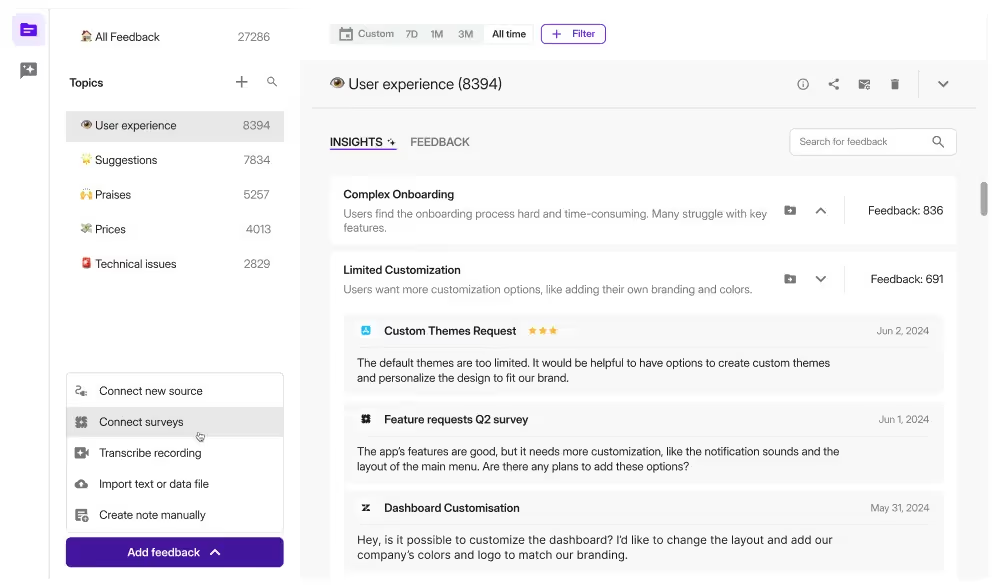
💡Tip 1: With Survicate’s Insights Hub, all your customer feedback is auto-categorized by topics. It highlights trending issues, frequent requests, or friction points so you know what to prioritize.
💡Tip 2: Want faster answers? Use the built-in Research Assistant to ask, “What do users struggle with most during onboarding?” and get instant, data-backed insights pulled from all your feedback sources.
This is what separates “we’ve got feedback” from “we know exactly what to fix next.”
Act on feedback fast (and tell people you did)
The fastest way to build trust? Act on what your customers tell you, and let them know you listened. Share feedback internally via Slack or your team dashboard.
Route bugs to devs, feature requests to product, and sentiment issues to customer success. Then close the feedback loop. Whether it’s a personal follow-up or a product update announcement, let customers know their voice made a difference.
How to design an actionable feedback system
Real-time customer feedback is only as good as what you do with it. Turning feedback into action means more than just reading responses. It means embedding it into how your team operates. Here's how you can do that effectively:
Consolidate insights across channels
Your customers are talking everywhere: surveys, support tickets, social media, app reviews, and live chats. Don’t treat them separately. Bring all feedback and customer interactions into a centralized system so you get the full picture.
💡Tip: Psst, Survicate helps you gather input from across your product and channels, and push it into your CRM, analytics, and other tools.
Analyze trends to identify recurring issues
Once your data is centralized, look for patterns. What themes come up again and again? What are your top drivers of frustration (or delight)?
💡Tip: Yup, you have it right. With Survicate’s Insights Hub, themes are detected automatically, and high-priority feedback bubbles to the top.
Share customer feedback across teams
Don't silo feedback. Product teams should know what frustrates users. Marketing should know what excites them. Customer support should see what’s working. Use integrations with tools like Slack or HubSpot to push relevant insights to the right people in real time.
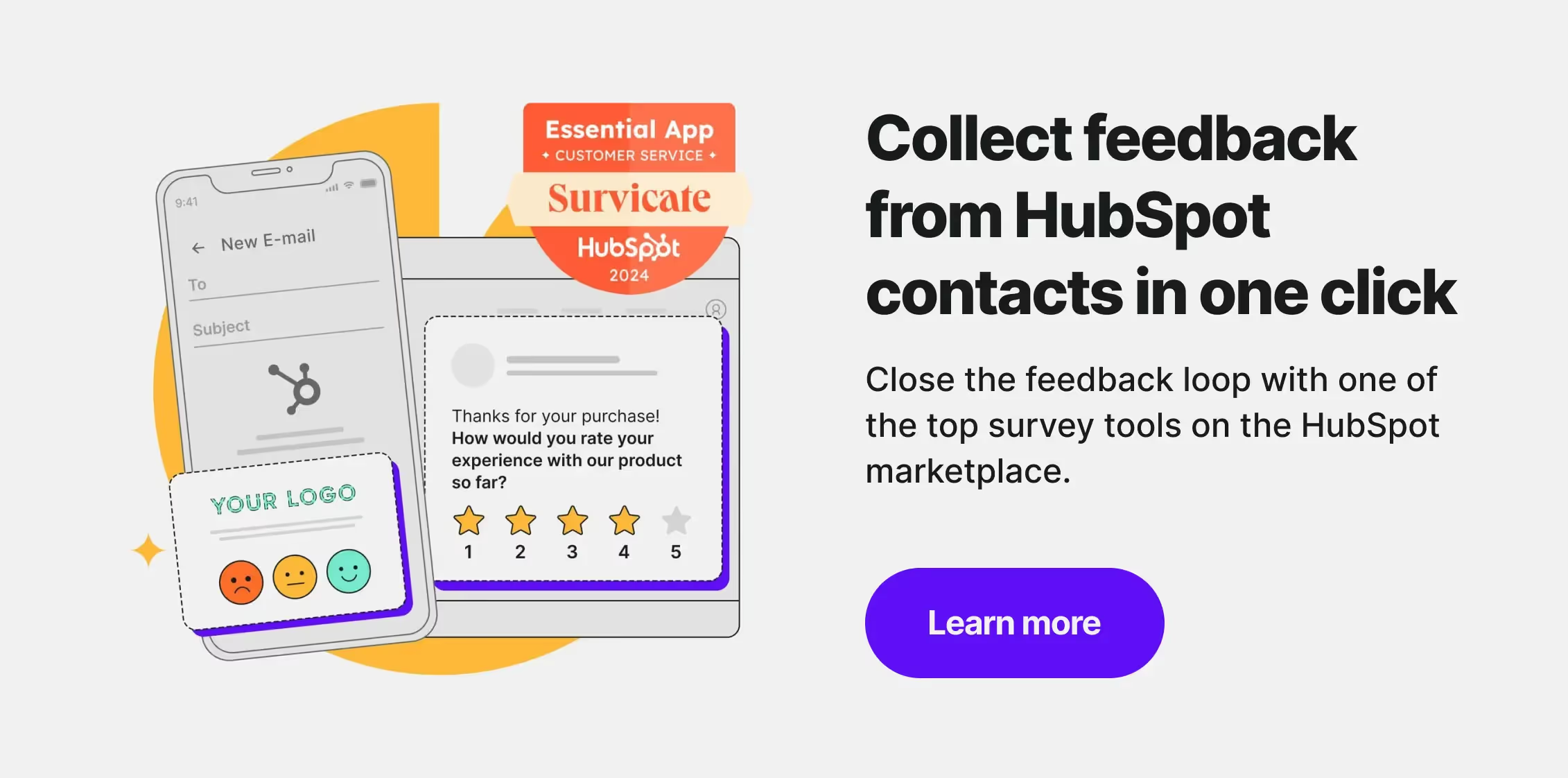
Prioritize what impacts the customer most
You can’t fix everything, and you don’t need to. Focus on what drives user outcomes like improving onboarding, removing bugs, or resolving confusing UX. Feedback tagging and prioritization features help you separate signal from noise.
Track changes over time to measure success
You acted on customer feedback, great. Now measure it. Has the NPS gone up? Are support tickets about that issue dropping? Use tools that let you track impact over time so you can prove ROI and keep optimizing.
💡Tip: For that matter, did someone mention Net Promoter Score (NPS), the pinnacle of customer feedback survey? Here's a handy survey template for you:
Automating this loop with Survicate keeps your team informed, you move faster, stay relevant, and build better experiences at scale.
- Consolidate insights across channels
- Analyze trends to identify recurring issues
- Share feedback across departments
- Prioritize what impacts the customer most
- Track changes over time to measure success
Tools like Survicate help automate this loop, from collection to action, so your team stays informed and agile.
Real-time feedback in action: mini case studies
These case studies show how real-time customer feedback systems can drive improvements and strategic change across various industries.
All of these teams use Survicate to collect customer feedback, route insights into their workflows, and analyze trends with the Insights Hub, making customer data an engine for growth.
Wahi: from survey to CRM workflow
Wahi uses Survicate surveys synced with HubSpot to automatically update customer profiles and trigger automated workflows. The result? Less manual data entry, faster follow-ups, and over 10 hours saved weekly—plus more relevant messaging and smoother customer journeys.

MAJORITY: optimizing onboarding through feedback
MAJORITY, a mobile banking app for migrants, uses real-time customer feedback during the onboarding process to surface friction points and localization gaps. By tracking customer feedback, they continuously tweak the flow for different user groups boosting activation rates and improving customer satisfaction across diverse communities.

Taxfix: personalizing user journeys with survey data
Taxfix doesn’t just ask for feedback, they use it to power their CRM. Their NPS surveys include smart follow-up questions that segment users by behavior and needs. This lets them personalize messaging, improve customer retention, and build trust in a category that’s notoriously tricky (hello, taxes).
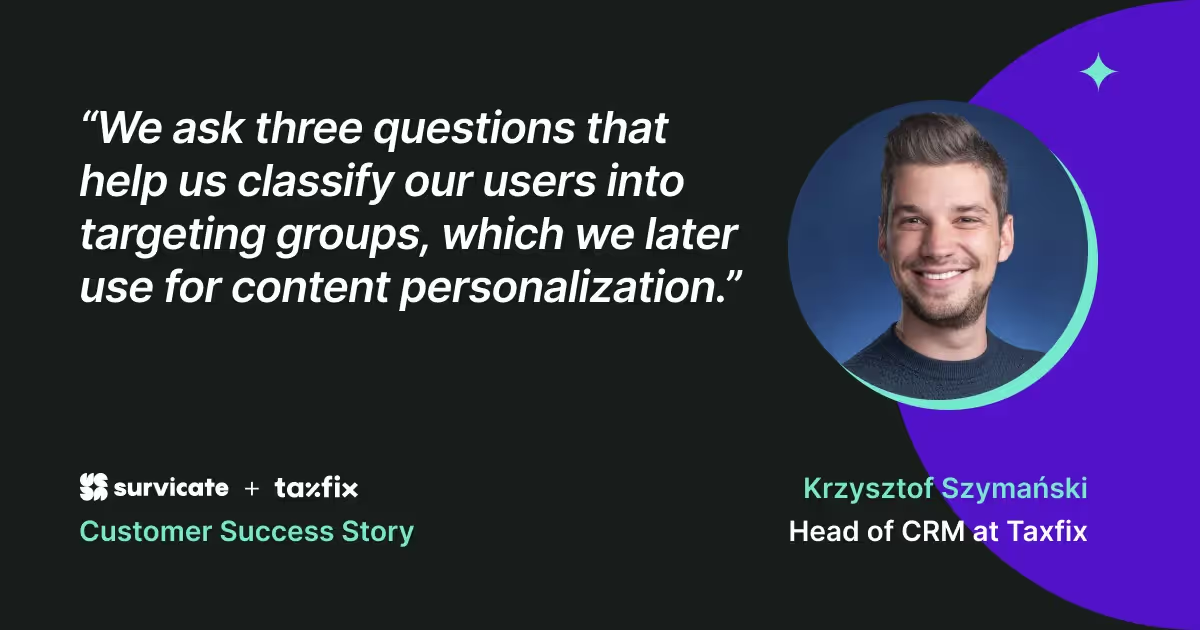
Bonus: real-time feedback checklist
Whether you're just getting started or looking to improve what’s already in place, this hands-on checklist will help you set up a real-time customer feedback program that actually works—not just in theory, but in practice.
How to set up a real-time feedback loop with Survicate ⤵️
- Define key moments in the digital journey where customer feedback matters most (e.g., onboarding, feature use, purchase, cancelation)
- Pick your distribution channels: in-product surveys, email, chat, or mobile app popups
- Set up Survicate (or your tool of choice) to distribute surveys via link, app, widget, or messenger
- Connect your customer feedback tool to your existing stack, integrate with your CRM, help desk, product management tools, and messaging platforms to make closing the feedback loop seamless. Automate workflows to save time, flag issues instantly, and personalize content or follow-ups based on user input without lifting a finger.
- Trigger surveys based on user actions (e.g., sign-up complete, support ticket closed)
- Auto-categorize responses using Survicate’s Insights Hub (UX issues, bugs, pricing, etc.)
- Use Research Assistant to uncover trends (“What frustrates users during checkout?”)
- Route feedback instantly to Slack, HubSpot, or your customer support team
- Flag urgent issues (detractor NPS scores, angry comments, “bug” mentions)
- Close the customer feedback loop: reply, follow up, and announce fixes where possible
- Review weekly to spot recurring issues and track progress
When these pieces are in place it's when you start building a repeatable customer feedback system that helps your team move faster, fix friction points, and deliver better experiences at every touchpoint.
Collect real-time customer feedback with Survicate
The ability to gather and respond to customer feedback in real-time is crucial for businesses aiming to enhance the customer experience and swiftly address any issues.
Survicate survey software emerges as a reliable ally in this pursuit. It offers an array of features that simplify collecting and analyzing immediate customer feedback. With multichannel surveys real-time analytics, AI Survey Creator, and AI open text analytics, Survicate equips businesses with the tools needed to make data-driven decisions and foster a culture of responsiveness and customer-centricity. By valuing and acting upon customer feedback, you can improve your products and services and strengthen customer trust and loyalty.
If you're ready to elevate your customer insight strategy, a 10-day free trial of Survicate is available, providing full access to all Business Plan features. Take the first step towards transforming your customer feedback process by trying Survicate today.

FAQs about real-time customer feedback
What is real-time customer feedback?
Real-time customer feedback is a process where you collect opinions and reactions from your customers immediately after they experience your service or product. It's different from traditional feedback mechanisms due to its immediacy and relevance.
Here’s how it’s structured:
- Methods of collection:
- In-product surveys: Engage customers while they are using your product.
- Mobile in-app surveys: Catch users while they use the mobile app.
- Pop-up surveys and feedback widgets: Allow users to quickly share their thoughts on your website.
- Live chat: Capture feedback during an ongoing conversation.
- Characteristics:
- Instantaneous: You receive feedback at the moment, which means it's fresh and top-of-mind for the customer.
- Actionable: The immediacy allows for quick responses and swift action on your part.
- Relevant: Responses are more directly related to specific experiences with your product or service.
With real-time feedback, you're better equipped to understand your customers' needs, address issues promptly, and capitalize on opportunities to improve your product and the overall customer experience. This immediate insight can be pivotal for customer satisfaction and loyalty.
Embrace this feedback to stay informed about customer perception and to make data-driven decisions. Remember, your ability to respond swiftly and aptly can transform the quality of the customer journey.
Benefits of real-time feedback
Real-time feedback offers a host of advantages, from bolstering engagement with customers as they interact with your services to streamlining your company's decision-making process.
Immediate customer engagement
When you receive real-time feedback, you're able to engage with customers exactly when their experience is at the top of their minds. This immediacy can lead to quick resolutions and a more personal touch, which often translates into better customer relations.
Enhanced customer satisfaction
Your swift response to feedback resolves issues faster and shows customers that their opinions are valued. This can significantly boost customer satisfaction and loyalty.
Accelerated decision making
Real-time feedback provides your business with instant insights, allowing for quicker decision-making. You're able to act promptly on the feedback, addressing any concerns before they escalate.
Product and service improvement
Immediate customer feedback facilitates continuous improvement. By understanding customer experiences at the moment, you can make informed enhancements to your products and services, tailoring them more closely to user needs.
Best practices for real-time feedback
When integrating real-time customer feedback in your SaaS, it's crucial to adhere to specific best practices to optimize the impact it has on your business:
- Promptness: Time feedback requests appropriately, striking a balance between obtaining insights and respecting customer time. For instance, you may employ in-app surveys that appear during user engagement with your application.
- Simplicity: Keep your feedback mechanism simple. It should be straightforward for customers to share their experiences. One-click ratings or short surveys are effective.
- Segmentation: Segment your audience to tailor the feedback experience. By understanding customer personas and behaviors, you target your feedback requests more accurately, which can streamline the process and increase response rates.
- Actionable Insights: Ensure that the feedback you collect can translate into tangible actions. Segmenting audiences and customizing questions can provide more actionable data.
- Privacy: Respect your customer's privacy and be transparent about how you'll use their feedback.
- Continuous Improvement: Establish a feedback loop where you quickly implement changes based on feedback, providing customers with a sense that their input has immediate value.
By focusing on these practices, you'll be able to collect valuable feedback that can shape an outstanding customer experience and drive your product development forward in meaningful ways.
What are the technologies behind real-time feedback?
Your ability to collect feedback instantly relies on advanced technologies that are specifically designed for speed and precision.
Feedback Management Software
Feedback Management Software enables the collection of feedback and the analysis of customer input across platforms. It facilitates immediate action and enhances customer engagement with real-time alerts and automated responses.
Customer Relationship Management (CRM) Systems
Your CRM system captures real-time feedback from various touchpoints and consolidates this information, allowing you to maintain comprehensive customer profiles that are updated with each new interaction.
Feedback Analysis Software
With feedback analysis software, your business can quantify qualitative data. This software is integral for interpreting open-ended feedback and turning it into actionable insights, ensuring you don't miss the nuances of customer sentiment.
Real-Time Analytics Platforms
Your real-time analytics platforms are crucial for monitoring customer feedback as it happens. They enable you to visualize data through dashboards and respond proactively to customer needs, thereby optimizing the customer experience.
How to implement real-time feedback - case studies
These case studies show how real-time feedback systems are tailored and leveraged to drive improvements and strategic change across various industries.
Retail industry
In the retail sector, businesses like Lowell have transformed the customer experience through real-time feedback. By deploying a platform that captures customer feedback at over 14 touch-points on the customer journey, Lowell empowers their frontline staff with actionable insights to respond swiftly to customer needs.
Service providers
Service providers have also embraced real-time feedback to enhance their performance. For instance, companies are motivating employees by shifting towards future-focused feedback, which aims to direct employees’ efforts towards future improvements rather than merely assessing past performance. This approach has shown positive effects on feedback acceptance and the intention to change behaviors among employees.
Technology companies
SaaS and technology companies actively employ real-time feedback to gauge customer sentiment directly within their applications. Methods like in-app surveys provide immediate insights into user experience, allowing companies to adjust quickly. This approach has been especially beneficial for real-time customer feedback in SaaS, where the promptness of the feedback loop is crucial for the fast-paced software development and service delivery environment.








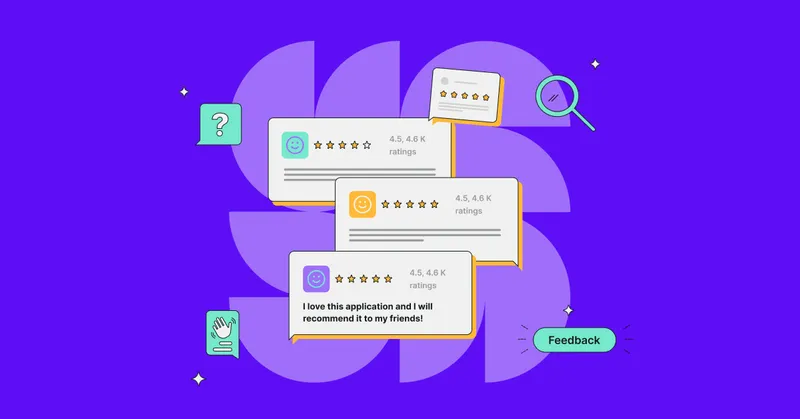
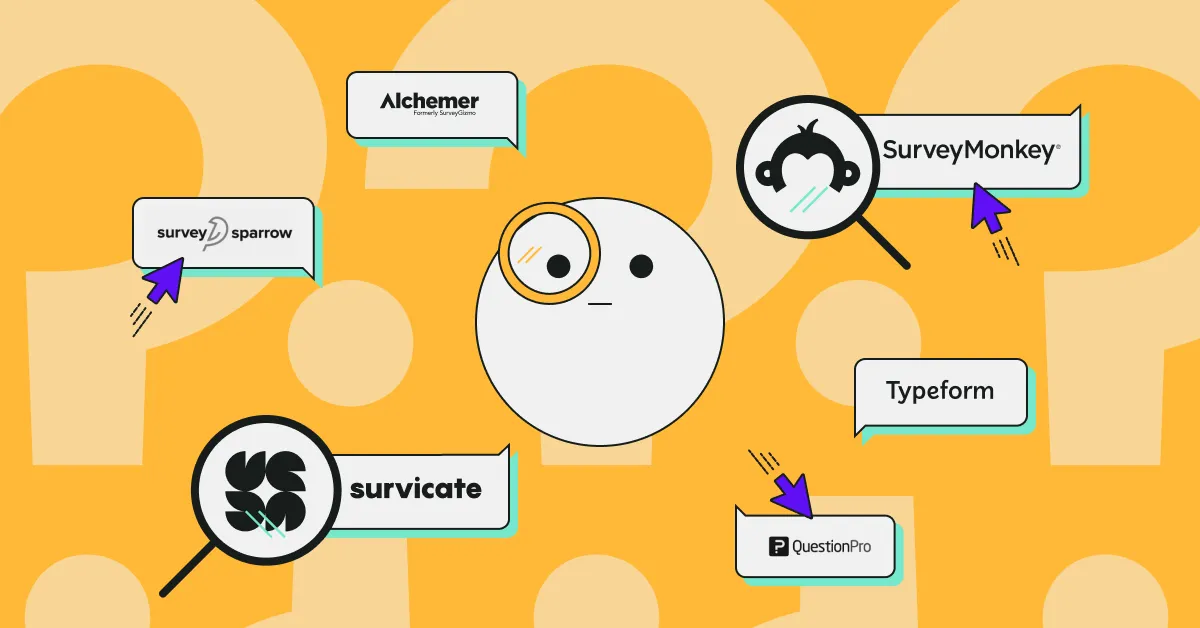

.png)
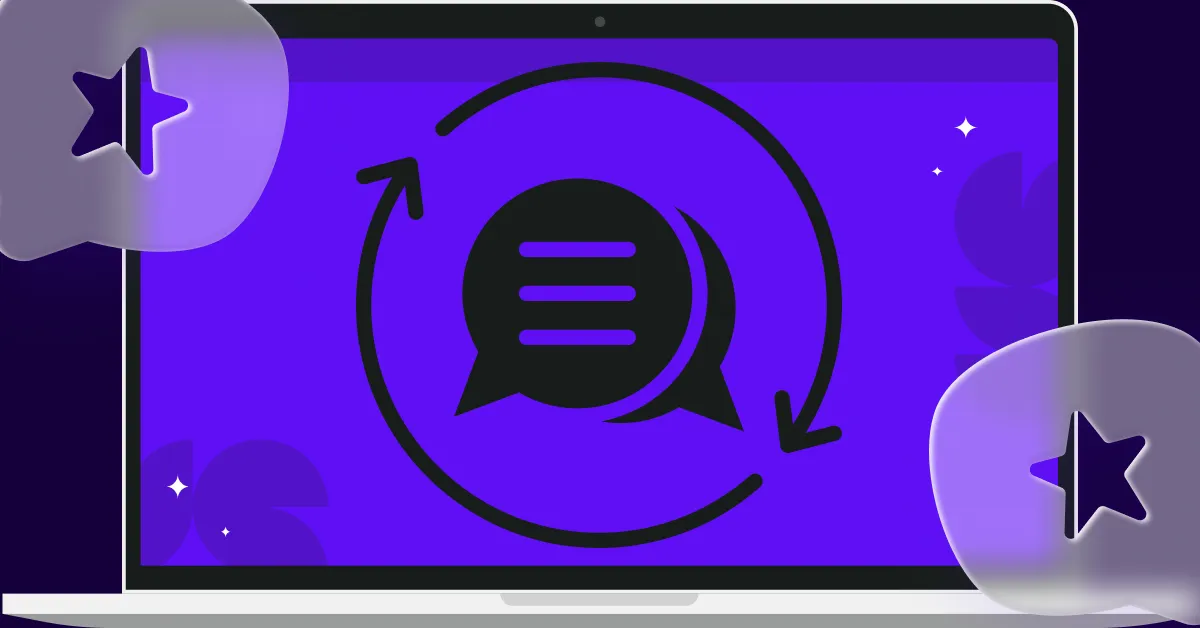
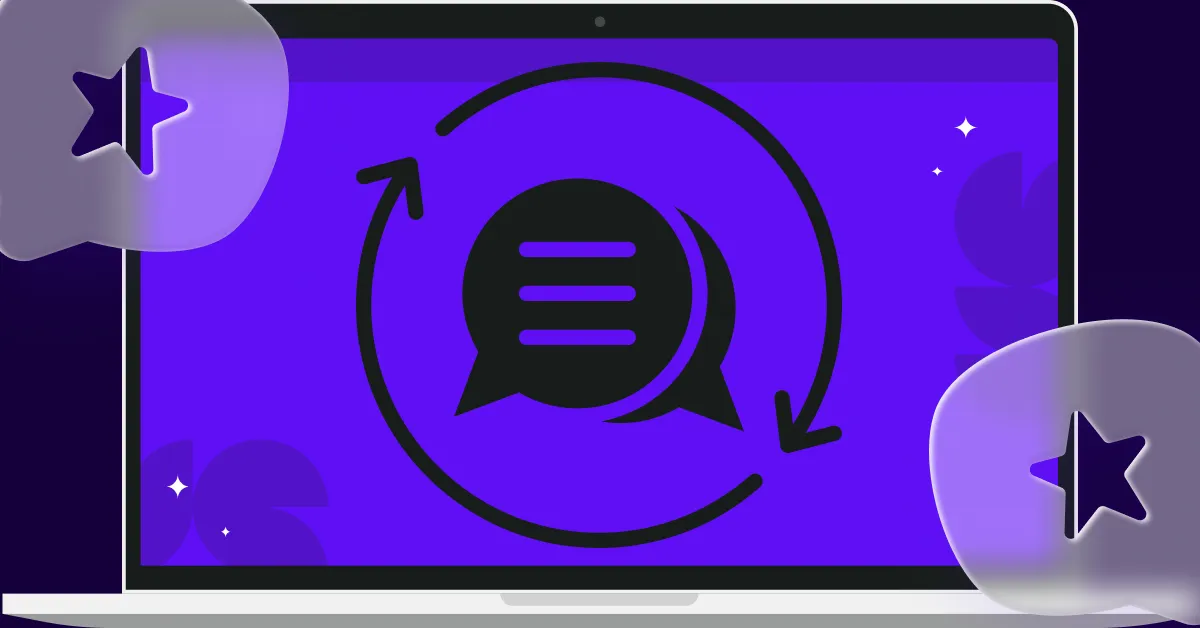

.svg)

.svg)



